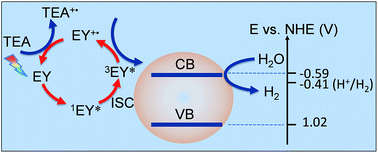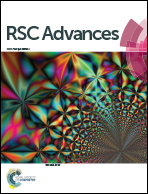In situ preparation of a MOF-derived magnetic carbonaceous catalyst for visible-light-driven hydrogen evolution†
Abstract
MOFs (Metal–Organic Frameworks) have emerged as novel photocatalysts for water reduction but are frequently plagued by their instability when exposed to moist and strongly acidic or alkaline reaction environments. Herein we employed a volatile Fe-based MOF in alkaline solution as precursor to evolve into a magnetic carbonaceous photocatalyst in situ, which demonstrated highly efficient visible-light-driven hydrogen evolution (∼125 μmol H2 produced within 6 h using 5 mg of MOF precursor) with a quantum efficiency of 1.8% even in the absence of noble metal cocatalyst, indicative of a possible photocatalytic system containing only earth-abundant elements for long-term conversion of solar light into hydrogen energy. The catalyst exhibited an apparent stoichiometric formula of FeO3.3C0.2H1.0 and was determined to be essentially a carbon–metal oxides/oxyhydroxides composite. Laser photolysis and electrochemical measurements were performed to visualize the fundamental multistep electron transfer processes during water reduction, which opens a strategy for the rational design of MOF-derived catalysts to dramatically increase H2 evolution efficiency.


 Please wait while we load your content...
Please wait while we load your content...